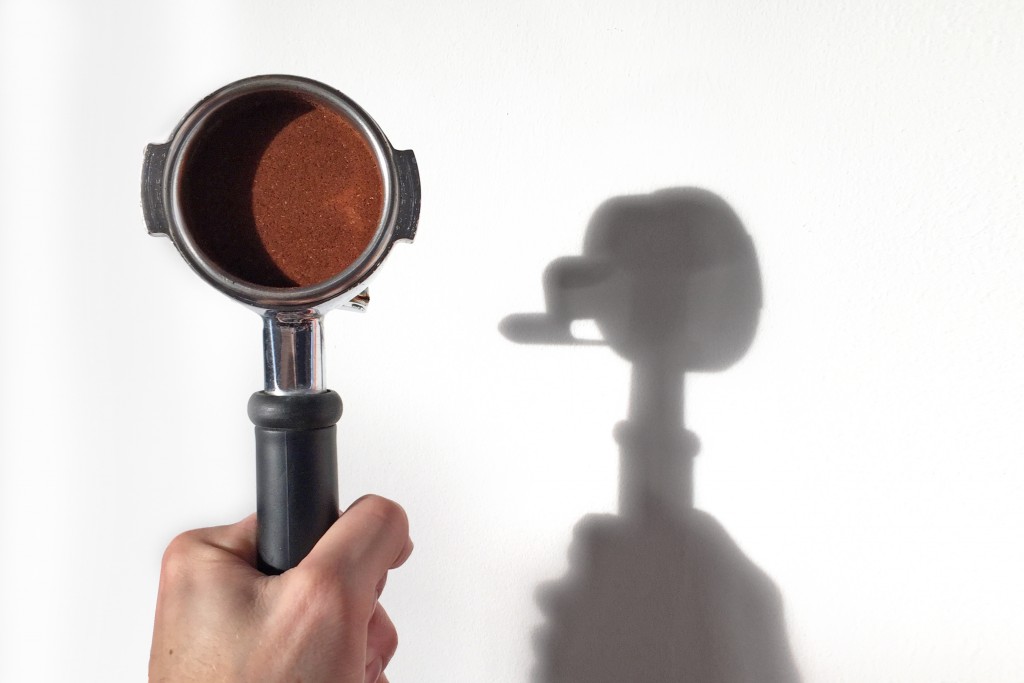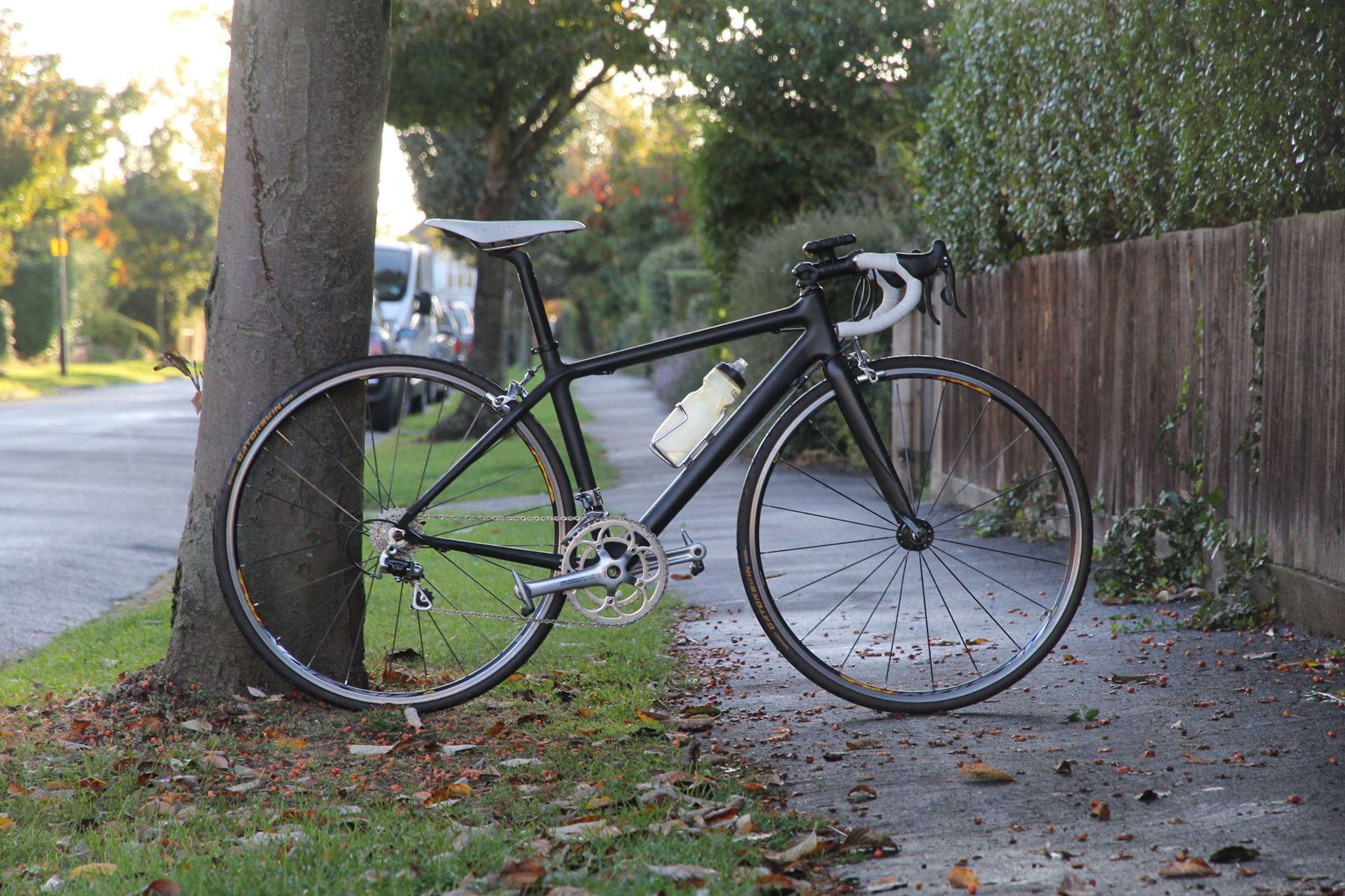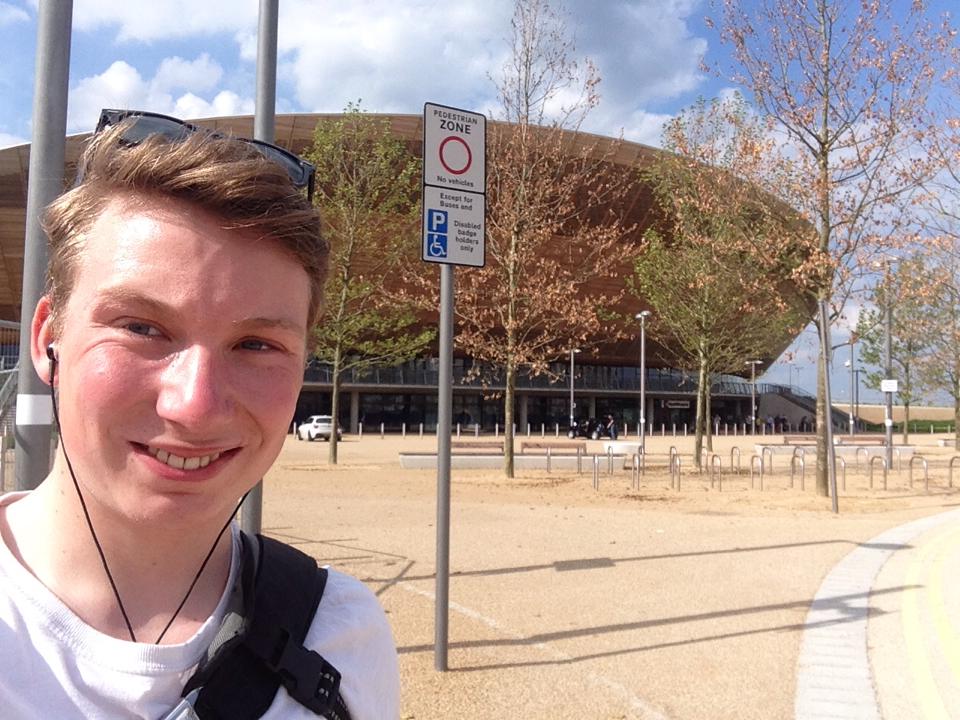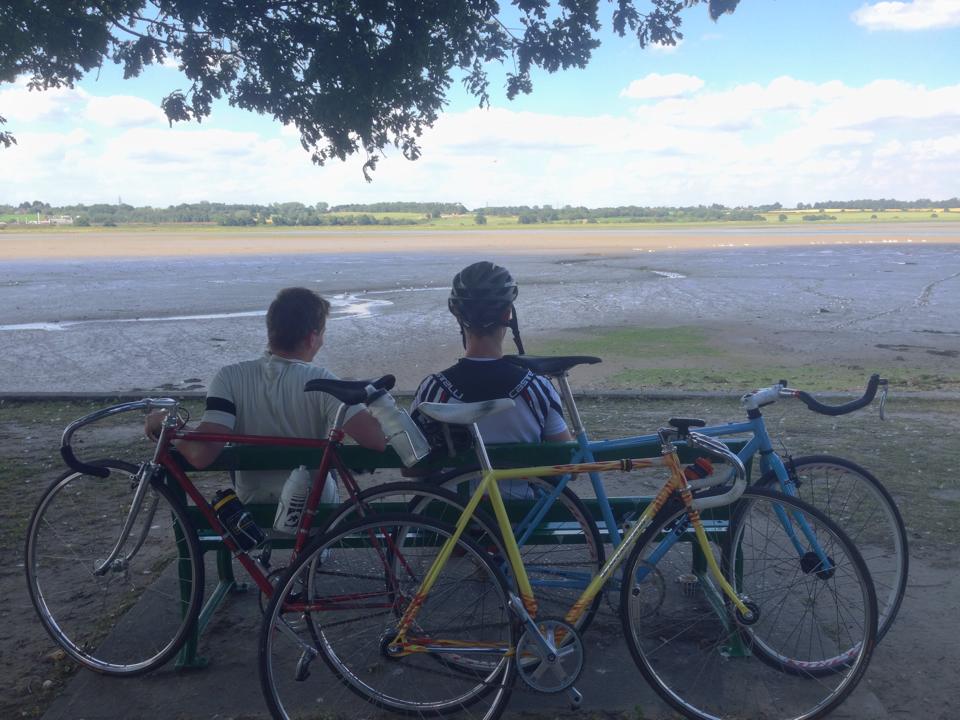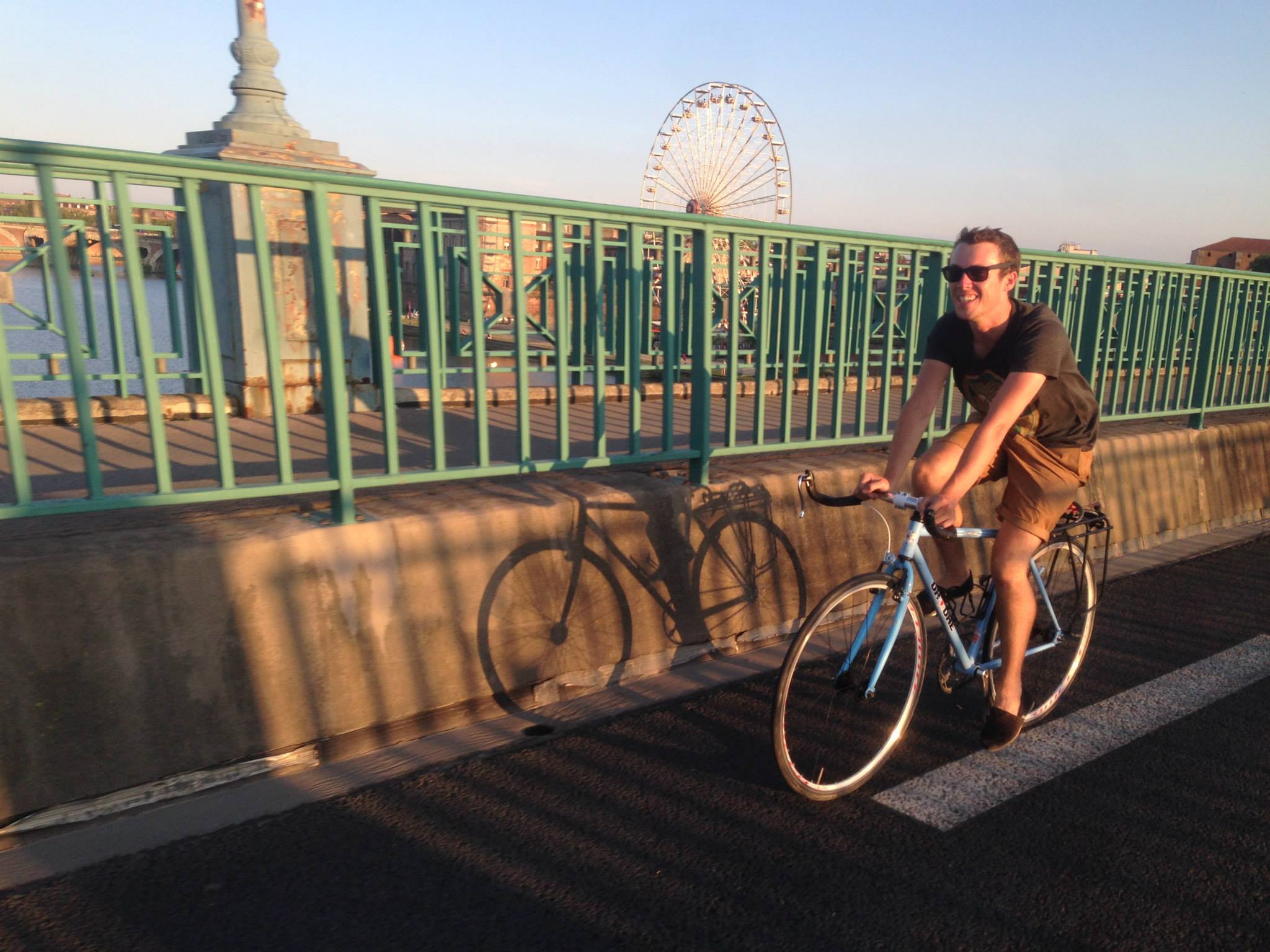The trend of hipsters manically peddling round town on a fixed gear bike appears to have reached its peak. Predominantly inspired by the couriers of San Francisco and New York, hipsters have inserted themselves into many urban landscapes via fixed gear bikes. For the last 5 or so years in the UK there has seen a surge of interest in building fixed gear bikes. So much so that large bike companies have gone to the effort of mass producing complete bikes for those to lazy or incompetent to do so. This is a fad that may have lost its novelty as a fashion statement but there are still large numbers of fixed gear fanatics who show no sign of giving up on these bikes. I consider myself to be one such fanatic, if not a particularly good one. But the trend has not died yet and I am still regularly involved in building bikes for myself or friends so shall therefore expound on the matter.
Fixies are still appealing on the grounds that they are still relatively cheap and incredibly customisable. For me, the process of building a fixed gear bike is a huge pleasure in itself so in outlining this marvellous process I am perhaps creating an ode to bike design as much as I hope to provide a practical guide to building a fixie. One of the key benefits of building a fixed gear bike is the attachment to the bike that develops throughout this process. Having an intimate relationship and complete understanding of the role of each part leads to a greater appreciate of the bike when riding. In striving to improve all aspects of the ride, the bike must be intensely focused on. Even when ones best intentions are to only to hold a functional appreciation of the bike the activity of selecting each piece of the machine can be unexpectedly satisfying. If you have already decided to build or purchase it is still essential that all of the potential benefits of riding fixed are being taken into account through the duration of the building process. Whether the goals include making a bike that looks good, rides well or is an economical form of transport these requirements must be held at the forefront of each decision that is made.
Fixed gear bikes differ from other bikes primarily in that they are much more simple. This is the essence of their beauty. Fewer parts means that there is less to go wrong. When it does go wrong the simplicity of the mechanics allow fixies to be repaired more easily, with fewer tools and less training than conventional road bikes. As there are fewer parts these bikes are much cheaper than road bikes, or rather, you can get much higher quality parts than if you spent the same money on a road bike. For example you will be spending a proportionally larger amount of your fixed budget on the cranks for a fixie than for a road bike, better cranks are stiffer and therefore lose less energy when accelerating and decelerating while keeping the weight of the bike to a minimum. The simplicity of the drive train allows for sturdier parts than on road bikes which massively increases the life of parts. Fewer parts of course also means less weight which means going faster. From an engineering perspective the is success in that functionality is improved through simplification.
The simplicity of the bike goes some way to reduce compatibility issues thereby massively increasing the customisability of the bike. The recent popularity of fixies has seen a surge in the colour and variety of custom bike parts that are available but fixies are also advantageous in that they can accommodate a wide variety of old and second hand parts. This can keep costs down and allows for a retro look if so desired. This is not to say that every part fits every bike, in fact most modern parts such as A-head stems and over sized bars can’t be used on traditional threaded forks and head sets. Aesthetically, it is often advisable to stick to using only modern or only retro style parts on a bike. This is a personal opinion and very much an over generalisation but probably a useful guild line to keep in mind for complete beginners. However many parts do not fit neatly into either category and there are a number of ingenious solutions to modern/retro compatibility issues. A classic lugged frame looks great with a quill stem perched adjacent to simple brake levers on the drops that just control just the brakes. A chunky modern frame with carbon forks, deep V section wheels and a very thin saddle has a consistent style as well and utilises technological developments to maximise performance. There is certainly an aesthetic value to be found in function, modern time trial bikes look like stealth bombers and that is very cool.Team Sky’s time machine of choice.
Team Sky’s time machine of choice.
To contaminate the beauty of a retro bike with modern, performance orientated parts, for me, fails to achieve either good looks or an efficient bike rendering the product useless. Many people have experimented with mixing the old and the new but in my opinion this has not achieved enough success to be a desirable methodology to pursue. Some exceptions may be permissible, for example a brooks saddles look good on pretty much anything and its presence can always justified purely on the basis that they are fucking comfy.
As I have immersed myself more deeply in the culture and tradition of cycling, retro and fixed gear bikes have become more appealing on the basis that they hark back to the heroes and history of simpler times. With the tint of hindsight it is easy to pick out riders and rides that accomplished astonishing feats, especially considering their lack of modern technology.Eddy Merckx didn’t need carbon fibre to be a badarse on a bike.
Eddy Merckx didn’t need carbon fibre to be a badarse on a bike.
The Tour de France was first raced on fixed gear bikes requiring riders to remove and flip the wheel round to select the lower gear ratio for climbing hills. Perhaps, in reverting to past technologies we are in some way displaying solidarity with the hard men of the tales of yore. This is certainly not something I was aware of when building my first or even my third bike yet the technology and economics of days gone by often required bikes to be built by true craftsmen who spent decades honing their expertise and produced machines that cannot be considered to be technically or aesthetically inferior to many great works of art. Perhaps in riding fixed we are demonstrating that appreciation of bike craft should held in higher regard than the convenience of mass production.
Above all, the reason to go fixed is for the ride. It may not be the most efficient way to get up a hill or maintain a high average speed but its a hell of a lot more fun. The smooth acceleration from a taught drive train instantaneously propels one into the future. “Flying” is certainly the best word to describe the experience. Whether one is grinding up a steep incline wishing a large sprocket had been selected or cruising past hybrids in traffic, there is a greater awareness that motion is being achieved through the union of rider and bike. The symbiosis of man and machine can only be truly achieved when riding a fixed gear bike where every pedal stroke directly informs the rider of speed and momentum by virtue of the beautiful bicycle.

